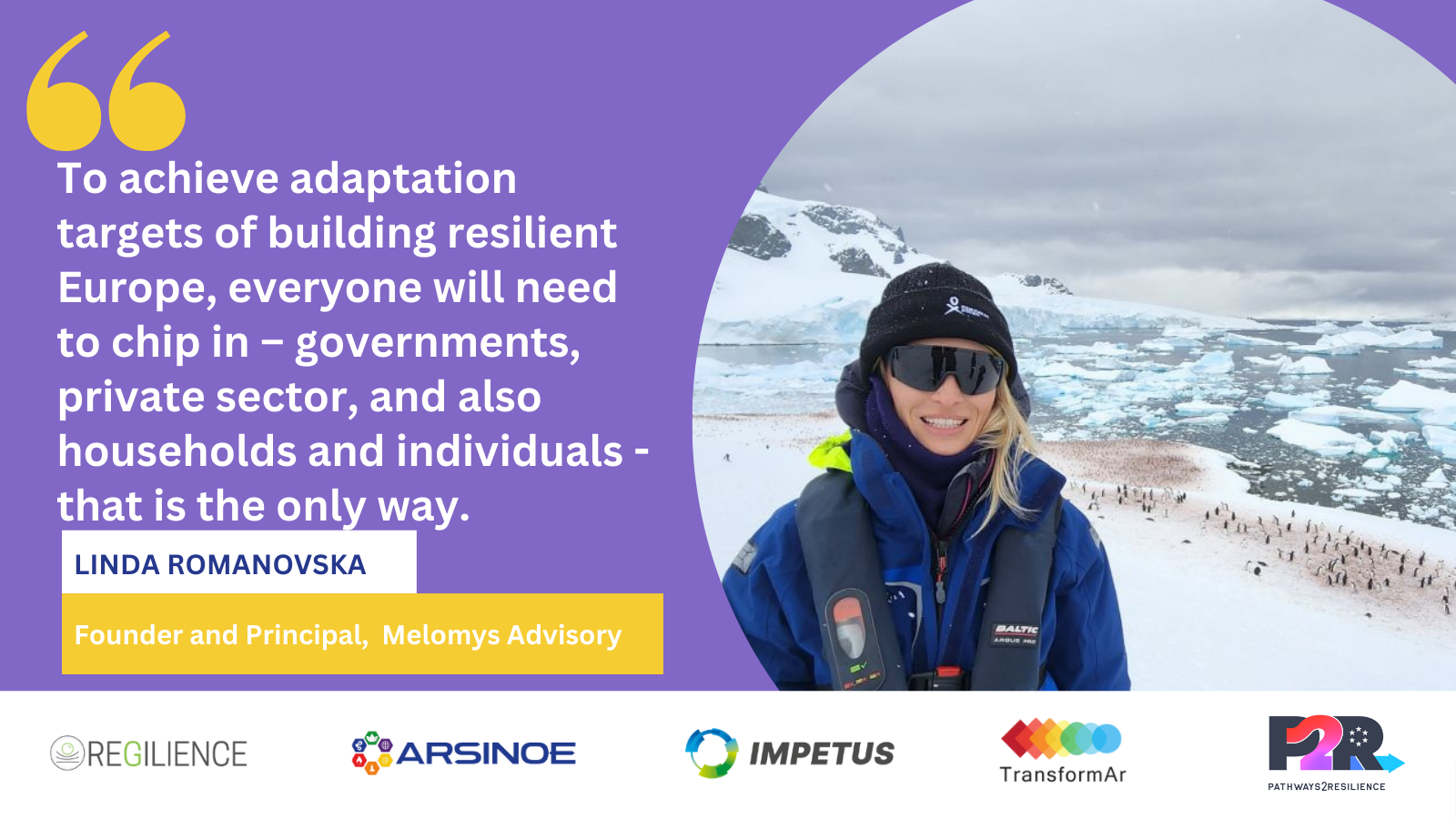March is the month dedicated to celebrating the achievements and contributions of women worldwide. In alignment with this spirit, REGILIENCE, Arsinoe, IMPETUS, TransformAr and Pathways2Resilience have jointly engaged in insightful conversations with inspiring women actively involved in crafting resilience and adaptation solutions to address the inevitable challenges posed by Climate Change. Discover their journey!
How is your expertise and background concretely reflected in your role in TransformAr project?
I have had the privilege to be working on EU adaptation policy making from the very early days of it being established as a policy area – e.g. through working on the very first EU’s Strategy on Adaptation to Climate Change. Although over time, I have expanded my expertise to broader climate and sustainability matters, I still work on adaptation whenever I can, and am very happy this can be leveraged in TransformAr, which has adaptation in the centre of its purpose.
Over the last 5 years or so I am also heavily involved and grown significant expertise in sustainable finance, including through supporting the development of EU’s sustainable finance framework. Sustainable finance is about channelling private sector investment towards climate and environmental action, and this is where it intersects with TransformAr. Therefore, the TransformAr task on researching the bankability of adaptation projects, which is what I am working on, directly benefits from my sustainable finance expertise.
What are the 3 main drivers that have motivated and still motivate you to contribute in the field of climate adaptation policy?
My story started in Copenhagen back in 2009. I was doing my Master’s degree in Environmental Management and Sustainable Energy Planning and Management in Denmark, when the Climate COP15 took place there. I was present at the COP and witnessed it fail spectacularly. Then and there I decided that I will be devoting my professional life to grappling with this incredibly complex problem we face as a humanity… and I am still doing it. I was lucky to then be given an opportunity to join the adaptation team at DG CLIMA, European Commission for a period of time right after my Master’s and it went from there.
What is the biggest challenge you faced in your career, notably as a woman in your field of expertise?
Sometimes the biggest challenge is communicating complex matters in a way that is heard, especially when “dumbing it down” and “simplifying” will lead to dis-beneficial outcomes. It is not gender specific, but certain actors prefer significant simplification over important substance. The strive for over-simplification in these times of 9-second attention spans makes it difficult to be working towards the required complex and nuanced solutions to a complex wicked problem, such as climate change.
A fair bit into my career I now finally do feel recognised as an expert regardless of my gender, and am lucky to be working in a workplace with a very low gender pay gap (zero gap for median salaries), but I know too well that not every woman is in this position. I am part of Women in STEMM leadership Initiative called “Homewardbound”, where women support women in their leadership journeys. And that is my advice for women who may be struggling out there – sometimes the power is in numbers, in women-to-women connections, to build confidence, strategies and ways to counter-act the still pervasive inequalities in certain professions and geographies.
According to you, what is currently the biggest gap we face to adapt efficiently to climate change?
In EU we are significantly lacking private sector awareness, buy-in and investment – both in their own resilience and in the resilience of communities they operate in. Same for private sector investment funds and lending – private sector adaptation finance is significantly lagging behind mitigation finance. This is however becoming an urgent situation with climate hazards a reality in most parts of Europe causing devastation and high losses. To achieve adaptation targets of building resilient Europe, everyone will need to chip in – governments, private sector, and also households and individuals – that is the only way.
How do you plan to contribute to reduce this gap, or continue to contribute to make our societies more resilient?
I am intending to be working on my mission until I retire and beyond. I have done it for 15 years and still going strong!




